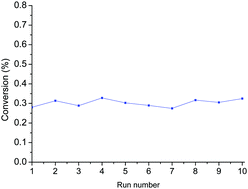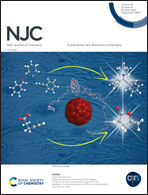Discovery of very active catalysts for methanol carboxylation into DMC by screening of a large and diverse catalyst library†
Abstract
The direct synthesis of dimethyl carbonate from methanol and CO2 is particularly attractive as it provides a green alternative to other routes while allowing CO2 conversion. Although the evaluation of catalyst formulations figures prominently in the literature, one can hardly identify which formulations are the most active. One of the reasons is that there is no standard testing protocol. Initial water content in the reactive mixture is critical as it can drag down thermodynamic equilibrium. This study aims to rank catalyst activities and to identify the most active catalysts using a systematic protocol for the measurement of the true catalytic activity. Based on an assessment of critical parameters, a protocol for the measurement of the activity in the liquid phase, taking care to the limitation induced by thermodynamic equilibrium, was developed. Special attention was paid to the quantitative assessment of critical experimental parameters. Following the protocol, a screening of various pure and mixed oxides of about 60 different solids was carried out. Finally, an optimization study was carried out on Zr–Ce mixed oxides produced by different synthesis methods, leading to the discovery of the catalyst which, to the best of our knowledge, is the most active reported so far.

- This article is part of the themed collection: NJC Editorial Board web collection


 Please wait while we load your content...
Please wait while we load your content...